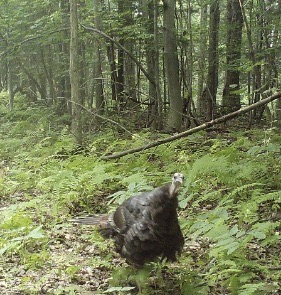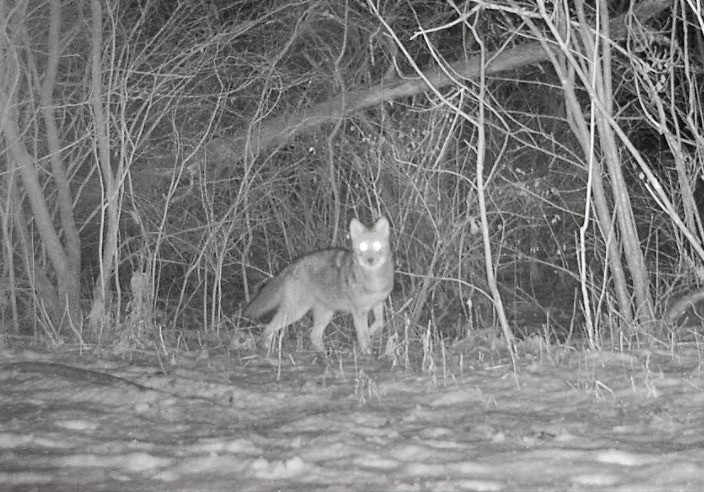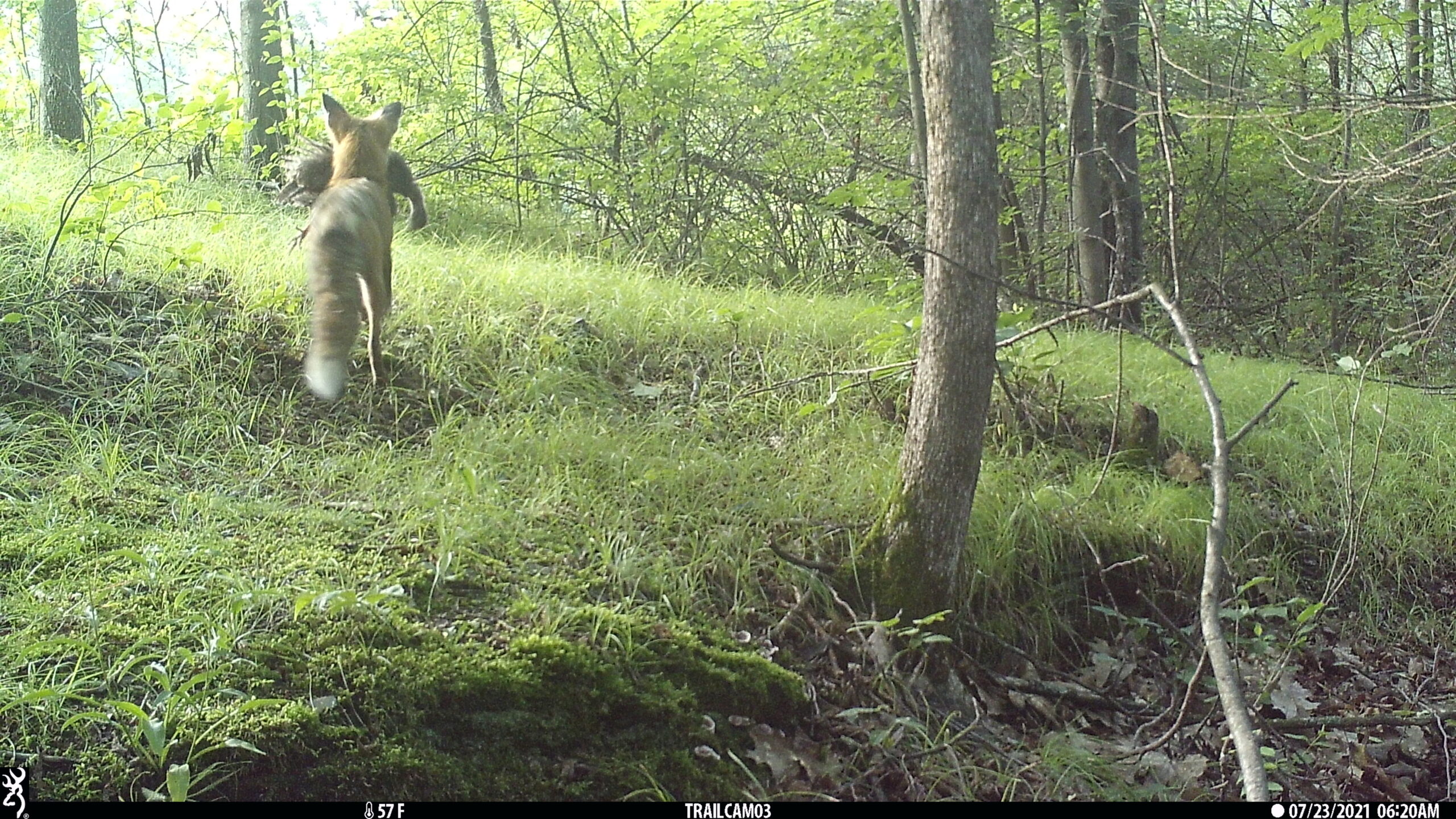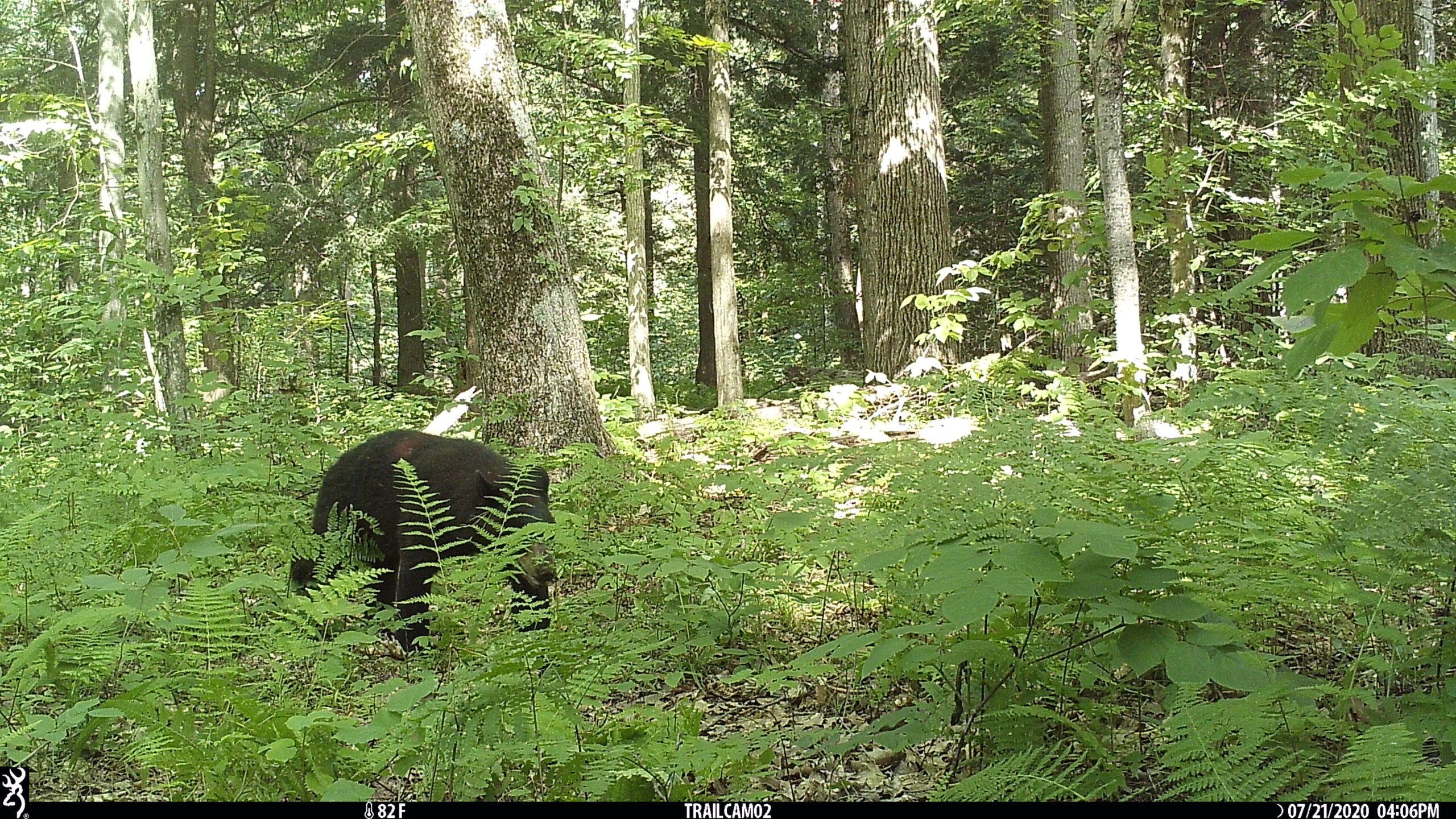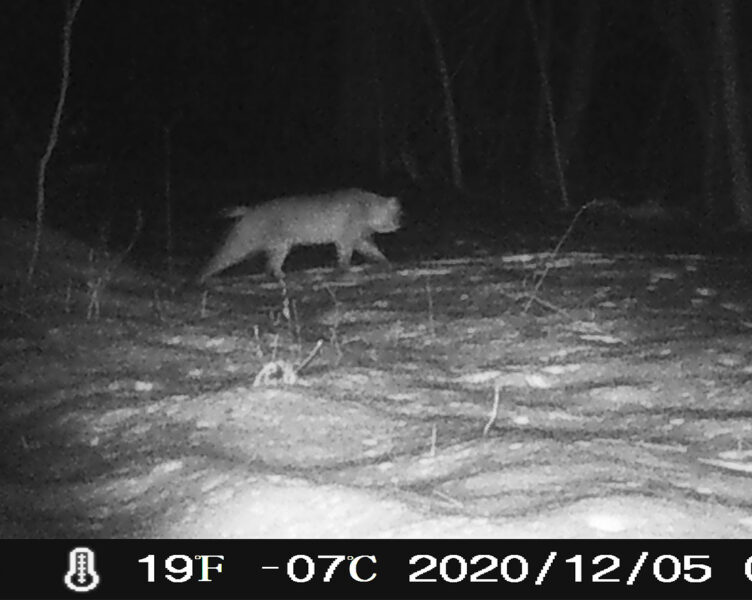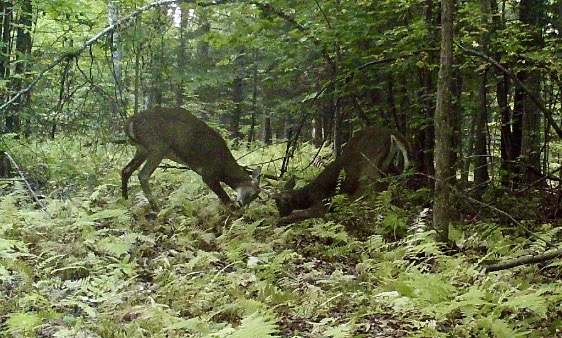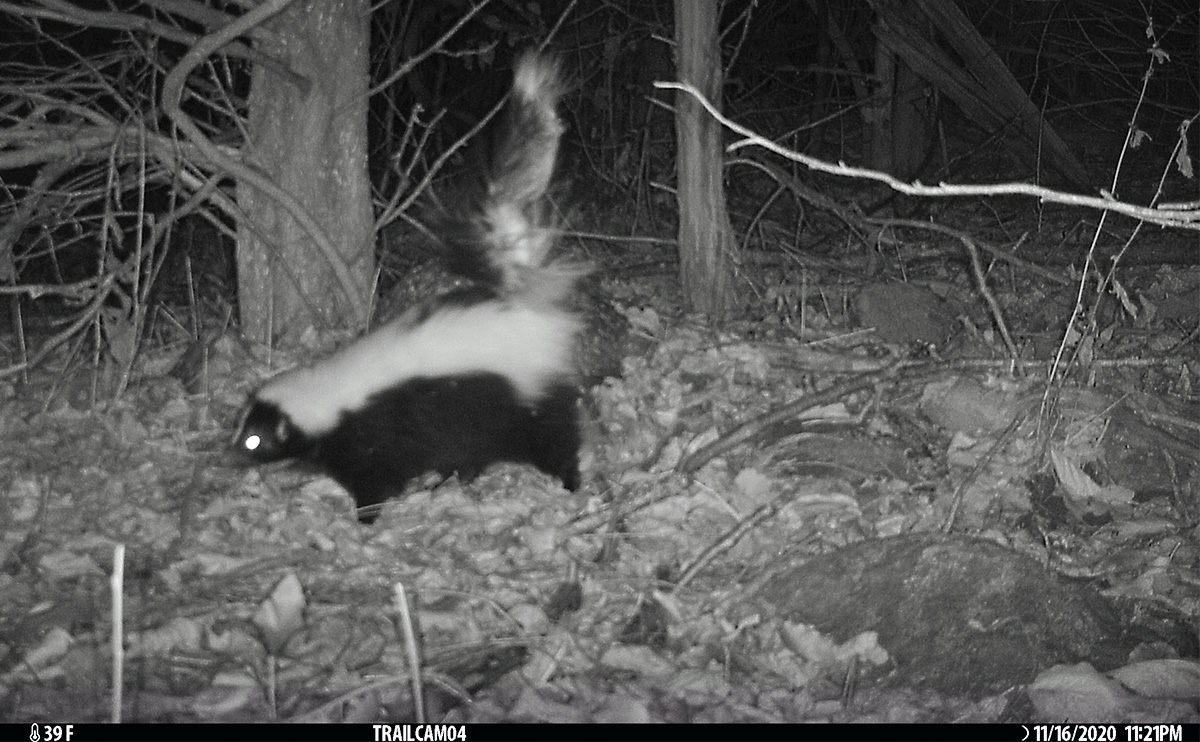Cornwall, like many towns in the Champlain Valley, is blessed with an array of wildlife. An important aspect of the Cornwall Conservation Commission’s advocacy work is the support of the town’s wildlife population. For several years the Commission has gathered anecdotal information about the movement of larger mammals between the town’s large forest blocks that offer food, shelter, and safety.

In our town, these core forest areas are separated from one another but, in order to maintain healthy populations and genetic diversity, animals must move between them. To do so, they utilize wooded areas, sometimes following streams or even fences or hedgerows that provide cover and food. And, they often travel at night.
Since such linkage areas are a critical part of our landscape, field - documentation of their usage is the necessary next step. This information can assist the town in making decisions that protect both significant interior forest blocks and the connectivity habitat that allows a healthy population of wide ranging animals to thrive.
The Trail Camera Project will be a multi-year endeavor. In early May 2020, the Commission set out its four cameras in spots where there had been reports of frequent sightings. In two of these initial placements, there was ongoing use of the area by a wide range of animals, including larger predators (bobcat and coyote). In the other two, very limited use was recorded and these cameras were moved to new locations. (A fifth camera was added in August.) We are continuing to move some of the cameras in search of transit areas that are frequented by a variety of animals while leaving two cameras in place.
Cameras in action!
Wildlife pictures from the trail cameras are now providing data about the sites’ usage, and they tell us a lot about the animals who use them. Here are some of our favorite photos from the first months of collection.
Mystery photo! What animal is this?
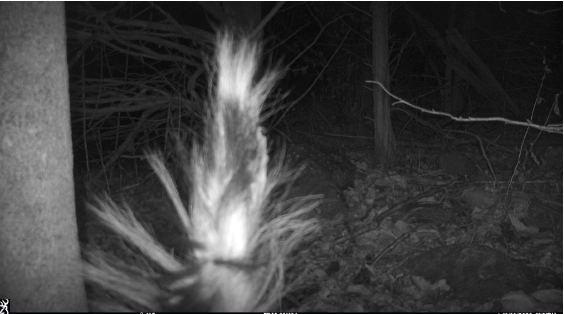
Background

Getting your own camera
If you have never used a trail camera, the Conservation Commission can share tips on finding a good one online and guide you through the first steps in learning how to use it.
Camera Trapping Guide by Janet Pesaturo is an excellent resource for photography techniques as well as photos and information on each animal’s physical characteristics, tracks, diet, scat, habitat, breeding, as well as specific camera-setting tips.
For one-hour talk about trail cameras, in which Pesaturo discusses how trail cameras work and how to set them up, go here.
For further information about this project or to participate in it, contact Conservation Commission member Mary Dodge.

